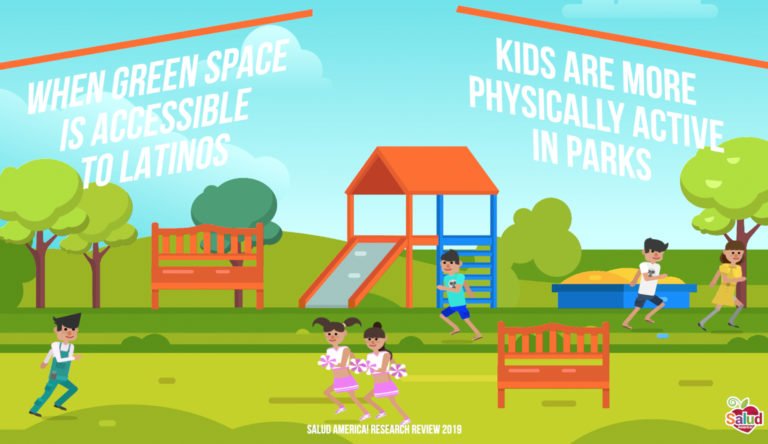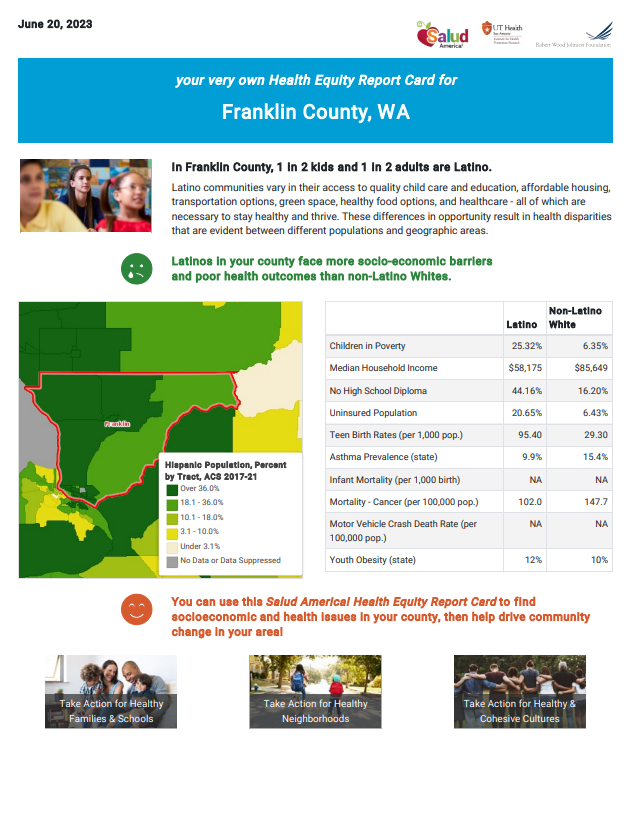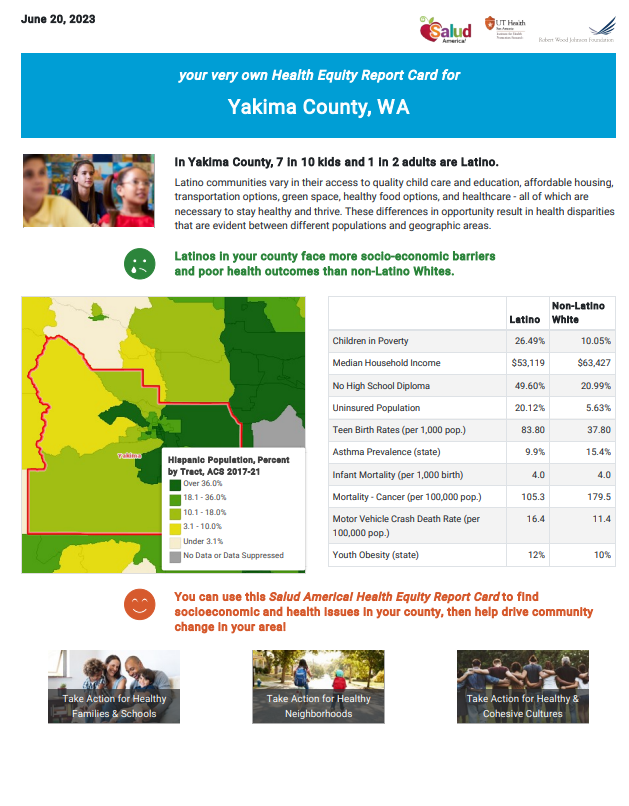Where you live is linked to how healthy you are.
Those who spent time in nature emerged more restores, less stressed, and reporting less anxiety and/or depression than those who did the same activity, for the same duration, in a built environment, according to several studies.
Green spaces affect individual and environmental health.
Green spaces support environmental and public health- they filter air, remove pollution, reduce noise, cool temperatures, replenish ground water, mitigate storm water, and grow food.
Green spaces can boost physical, mental, and emotional well-being.
For Latine and Hispanic children, interaction with nature early in life has been associated with cognitive changes that improve behavioral development and emotional regulation.
Individuals with more green space near their home (within a 3km radius) were less affected by stressful life events than those with low access to green space, with greenery buffering stress.
Park experiences have been shown to directly reduce stress and provide a restorative effect that impacts health by modulating the immune system and inflammatory factors.
THE CONNECTION BETWEEN PARKS AND HEALTH IN THE LATINE/Hispanic COMMUNITY
Hispanics and Latines make up a vibrant segment of the U.S. population, but many struggle with issues such as poverty, access to health care, education and affordable housing. Latines are also negatively a impacted by a number of serious chronic health conditions - sometimes at much higher rates than the White population.
HEALTH CONDITIONS IN THE LATINe/Hispanic COMMUNITY
OBESITY
Approximately 42 percent of Latine adults are obese compared to approximately 32 percent of White adults and 22 percent of Latine children are obese compared to only 14 percent of White children.1 The overall life expectancy for Latines is declining as a result of obesity and obesity-related health risks.
ASTHMA
OBESITY RATES IN ADULTS (18+ YEARS) Latines face disproportionate exposure to asthma-inducing air pollution and have the highest rates of asthma in the country. Latine children are 40 percent more likely to die from asthma than non-Latine whites, and nearly 1 in 10 Latine children under the age of 18 suffer from this chronic respiratory illness
DIABETES
Latines are 1.7 times more likely than Whites to be diagnosed with diabetes and it is the fifth leading cause of death for Latines. An estimated 24 percent of adult Hispanics have diabetes and the rate of Type 2 diabetes in Latine children is increasing.
STROKE
Close to 3 percent of Hispanic adults have had a stroke and Hispanics are 30 percent more likely to have a stroke than Whites.
Hypertension
Hypertension – or high blood pressure -- is a major risk factor for heart disease and stroke. Among Hispanics who experienced a stroke, 72 percent had high blood pressure compared to 66 percent in non-Hispanic whites.
HEART DISEASE
Heart disease is the leading cause of death for Latines. According to the American Heart Association, 48.3 percent of Hispanic men and 32.4 percent of Hispanic women aged 20 and over have cardiovascular disease.
A CONTRIBUTING FACTOR TO HEALTH CONDITIONS LOW RATES OF PHYSICAL ACTIVITY IN THE LATINE COMMUNITY
There are a number of contributing factors to the high rates of chronic health conditions in the Latine community, including inequities in healthcare, poverty, poor education and lack of access to healthy food choices.
One of these factors is that the Latine population is 30 percent less likely to engage in active physical activity than Whites. One study found that 56 percent of Hispanic adults did not meet federal activity guidelines compared to 44.1 percent of Non-Hispanic White adults.
Go on a adventure. Go outdoors.
DISCOVER YOUR NEXT ADVENTURE
Visit DNR’s Where to go, what to do web page to learn more about recreation opportunities on DNR-managed land. Your new favorite spots for all of your favorite outdoor activities are waiting.
Check out thier Interactive Recreation Map to explore DNR recreation sites across the state. The map highlights all of DNR’s trailheads, campgrounds, day-use areas, and more.
KNOW BEFORE YOU GO
Before you head out on your next adventure, make sure you have your Discover Pass. Discover Passes are required to access recreation sites on DNR-managed land with your vehicle. The annual Discover Pass is transferable between two vehicles and must be displayed in your front windshield while parked at DNR sites. Learn more at discoverpass.wa.gov and find a Discover Pass vendor near you.
Don’t forget to check for recreation alerts in the area you’re interested in visiting. We work hard to keep you in the know about trail closures, restrictions, repairs, and activity around our sites. Recreation sites are updated daily as alerts occur.
Stay informed and stay safe while you’re out recreating. Review and download our Guide to Safe and Sustainable Recreation.
Green space initiatives that account for community needs can improve Latino physical and mental health. Latino kids who interact with nature early in life have cognitive changes, which improve behavioral development. When green space is accessible in Latino neighborhoods, Latino kids are more physically active in parks.
Green space initiatives are effective when they meet Latino community needs. Needs include using a community park as a hub for neighborhood events, social services, and connections to healthcare, repurposing vacant lots into play spaces, and creating greenways as safe routes to school, public transit.
Latino community involvement is key to neighborhood development, revitalization, and environmental justice. For successful green space and housing revitalization, community and multi-sector engagement is important.
Development is most successful when “cultural brokers” translate or amplify local the needs of working-class Latinos and immigrants to mainstream groups. Regular meetings in community settings and door-to-door and social media outreach are vital.
















